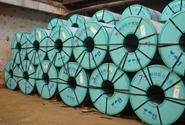Steel Products Prices North America

May License Trend is Indicating a Big Month for Foreign Steel Imports
Written by John Packard
May 18, 2017
The U.S. Department of Commerce (DOC) reported foreign steel import license data earlier this week. Based on the daily rate and projecting it over the course of the entire month of May we are anticipating another 3.0 million net ton month. As of the 17th of May the trend is for imports to be close to the 3.4 and 3.5 million net ton levels seen in March and April 2017.
The steel mills continue to be the largest importers of foreign steel with the data suggesting semi-finished steels (slabs/billets) will be around 800,000+ net tons. When adding some of the hot rolled and cold rolled being imported, also belonging to the domestic steel mills, the mills may actually be importing almost a third of the foreign steel coming into the country in May.
We are also seeing a surge of imports of oil country tubular goods (OCTG) and Galvalume. High imports are also expected on galvanized.
Lower imports appear to be happening on hot rolled and cold rolled.

John Packard
Read more from John PackardLatest in Steel Products Prices North America

Nucor slows HRC price climb with $5/ton increase
After eight weeks of double-digit price increases on hot-rolled (HR) coil, Nucor slowed the price rise this week with an increase of $5 per short ton.

Domestic CRC prices surge ahead of imports
The price spread between stateside-produced CR and imports reached its widest margin in over a year.

Evraz raises plate prices $160/ton
Evraz North America (NA) has followed Nucor and SSAB with a plate price increase of its own: up $160 per short ton (st). The increase was effective immediately for all new orders of carbon, high-strength low-alloy, and normalized and quenched-and-tempered plate products, as well as for hot-rolled coil, the steelmaker said in a letter to […]

Nucor lifts HR coil to $820/ton
Nucor has increased its consumer spot price (CSP) for hot-rolled (HR) coil for a fourth consecutive week.

Nucor pushes HR spot price to $790/ton
Nucor increased its consumer spot price (CSP) for hot-rolled (HR) coil to $790 per short ton (st) on Monday, Feb. 10 – a $15/st bump vs. last week. The Charlotte, N.C.-based company has raised its weekly CSP by $40/st over the past three weeks after maintaining tags at $750/st since Nov. 12, according to SMU’s […]

